Uterine Fibroids (myoma Uteri) — Uterine Artery Embolization: treatment in the Best Hospitals of Germany
Treatment prices are regulated by national law of the corresponding countries, but can also include additional hospital coefficients. In order to receive the individual cost calculation, please send us the request and medical records.
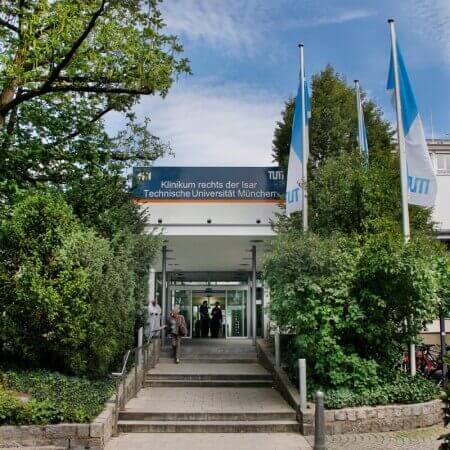
Department of Gynecology, Mammology and Obstetrics
The Department of Gynecology, Mammology and Obstetrics offers the full range of services in these fields, providing patients with the optimal treatment based on the very latest scientific advances and innovative technologies. The department's tasks include diagnostics and treatment of all gynecologic diseases and breast pathologies, as well as pregnancy management, childbirth and postnatal care for both mother and baby, elimination of fertility problems in women. The department has modern equipment for invasive and non-invasive diagnostics, three operating rooms equipped with state-of-the-art technology, especially in the field of minimally invasive and robot-assisted surgery, as well as special devices for microsurgery and fetal surgery. A competent medical team consisting of 18 senior physicians, 25 assistant physicians and medical specialists, obstetricians and specially trained nursing staff annually admits approximately 5,000 women for inpatient treatment and provides outpatient medical care for 14,000 patients. In addition, the department has four maternity rooms, in which about 2,000 babies are born annually.
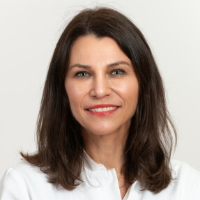


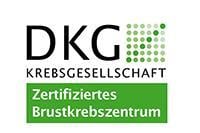


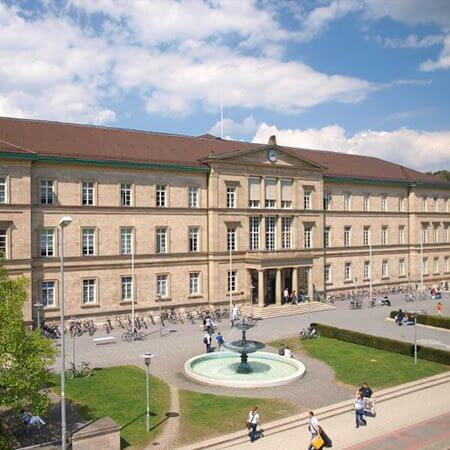
Department of Adult and Pediatric Gynecology, Mammology, Obstetrics
According to the Focus magazine, the Department of Adult and Pediatric Gynecology, Mammology, Obstetrics is included in the ranking of the top German departments specializing in obstetrics and breast cancer treatment! The department offers the full range of diagnostics and treatment of diseases of the female reproductive system, breast pathologies. Also, the specialists of the department provide a comprehensive management of pregnancy, childbirth and postpartum care for both mother and child. Key attention is paid to the treatment of female genital cancers, as well as breast cancer treatment. For this purpose, the department has all the modern therapeutic techniques, as well as its our own innovative developments by the department doctors.
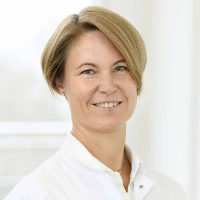






Department of Adult and Pediatric Gynecology, Mammology, Obstetrics
The Department of Adult and Pediatric Gynecology, Mammology, Obstetrics offers high-precision diagnostics and effective treatment of the full range of diseases of the female reproductive system and breast pathologies. The medical facility also employs a competent team of obstetricians, whose responsibilities include comprehensive management of pregnancy, childbirth, and postnatal care for mother and baby. More than 3,000 babies are born in the department's delivery rooms annually. The department cooperates closely with the UniFee Reproductive Medicine Center, which allows gynecologists to treat female infertility together with reproductive medicine specialists. The department's gynecologists focus on women with reproductive system cancers. The medical facility is certified by the German Cancer Society (DKG) as a specialized center. The specialists also successfully treat endometriosis, one of the most common benign gynecologic diseases. In the field of mammology, priority is given to the provision of medical care to women with breast cancer. Doctors perform comprehensive diagnostics, surgical and conservative treatment, and reconstructive plastic surgery after mastectomy. The department's specialists use state-of-the-art technical resources and their professional skills to provide each patient with high-quality medical service.






Uterine fibroid is a benign hormone-dependent tumor in women of reproductive age, mainly from 30 to 45 years old. According to the statistics, uterine fibroids account for up to 30% of all gynecological diseases.
Overview
Uterine fibroid is a benign tumor that develops from the muscle tissue of the uterus – myometrium. It is characterized by the proliferation of the muscle layer of the uterus with the formation of myomatous nodes. This pathology is one of the most common in patients of reproductive age.
Until now, the causes of uterine fibroids development have not been established. Most researchers associate it with increased hormonal susceptibility and genetic predisposition, calling changes in hormone levels one of the decisive causes of uterine fibroids development. Women may have a genetic predisposition to the development of uterine fibroids, but the disease progresses in the presence of predisposing factors. These include artificial abortions, surgical manipulations on the mucous membrane; concomitant extragenital and gynecological diseases; high intake of animal protein; being overweight; cardiovascular diseases (arterial hypertension, etc.); concomitant gynecological diseases (endometriosis, chronic inflammatory diseases of the uterine appendages, etc.); hereditary predisposition, chronic stress, etc.
Depending on the direction of uterine fibroid growth, intramural (inside the uterine wall), submucous (growing towards the endometrium), and subserous (growing towards the abdominal cavity) nodes develop. It should be noted that fibroids are often multiple. Even if only 1-2 fibroid nodes are detected, without appropriate treatment other nodes will appear sooner or later.
Fibroids are classified by location. The typical locations of nodes (in 95% of patients) are intramural (the tumor is located in the uterine wall), submucous (fibroid growth occurs towards the uterine cavity, causing deformation of the uterine cavity), and subserous (fibroid growth occurs towards the abdominal cavity). Atypical location of nodes is detected in 5% of patients, this is a cervical form of fibroid.
Symptoms
For a long time, the disease does not manifest itself clinically. The main symptom of the disease is abnormal uterine bleeding. It can often be confused with menstruation, but this bleeding is heavy and prolonged. With an increase in the size of the uterine fibroid, the intensity of bleeding increases significantly and can lead to anemia.
Also, this pathology is accompanied by the following symptoms:
- Feeling of heaviness and pressure in the lower abdomen. With a complicated disease course (torsion of the leg of the node), the pain is sudden, cutting, and very intense.
- Changes in urination (increased frequency), a feeling of incomplete emptying can occur with large fibroids. The tumor compresses the organs of the urinary system, causing such a symptom.
- Dysfunction of the gastrointestinal tract. Pain during defecation, constipation, flatulence, which occurs when the rectum is squeezed by a neoplasm.
- Infertility or miscarriage.
- Uterine bleeding (heavy, prolonged menses), often leading to anemia.
Diagnostics
The diagnosis of uterine fibroids can be made only after a physical and instrumental examination. Examination on a gynecological chair reveals an increase in the size of the uterus. Sometimes nodes are palpated, especially if they are located close to the surface (in case of submucous fibroid).
Ultrasound scanning of the pelvis can be performed transabdominally, but transvaginal examination is more informative. Transabdominal ultrasound scanning is performed only when the bladder is full. Ultrasound scanning allows the doctor to determine the location and size of the uterine fibroids, monitor changes in their size, etc.
Computed and magnetic resonance imaging (CT, MRI) are also informative. Due to the high cost of studies, they are rarely prescribed, since ultrasound scanning is enough to diagnose uterine fibroids.
Treatment
In recent years, one of the modern treatments of uterine fibroids, i.e. uterine fibroid embolization (uterine artery embolization), has been implemented into clinical practice worldwide. It has become a valuable addition to performed previously focused ultrasound treatments.
As a minimally invasive method, the uterine fibroid embolization procedure allows the uterine fibroid to be treated by blocking the vessels feeding the fibroid and thereby causing it to shrink and disappear.
Uterine fibroid embolization procedure is performed through a 1,5 mm catheter. During the uterine fibroid embolization procedure, the doctor inserts a catheter into the femoral artery through a small (about 5 mm) skin incision in the groin. After that the doctor moves it to the uterine arteries, monitoring the process using X-ray images. Tiny particles are then inserted through the catheter to block the vessels that feed the fibroids, causing the fibroid to shrink and disappear.
Uterine artery embolization procedure takes 1-1,5 hours. At the end of the uterine artery embolization, the doctor presses on the puncture site for some time (2-5 minutes) to avoid the formation of a hematoma . After that, a pressure bandage is applied to this area and the patient is transferred back to the ward. The pressure bandage is removed the next day.
In the first hours after the uterine artery embolization procedure, most patients experience pain in the lower abdomen. The intensity of pain varies from severe to mild. During this period, all patients receive adequate pain relief medicines. For the next 3-7 days, it is recommended to refrain from physical activity. During this period, mild pain in the lower abdomen and a slight increase in body temperature may disturb the patient. All of these symptoms are the consequences of uterine artery embolization and should not cause any concerns. However, patients can always consult with their doctor by phone, or come to the clinic if necessary.
In the uncomplicated course of the postoperative period, a control visit to the gynecologist in 1-4 weeks after discharge is mandatory. Subsequent visits are scheduled in 3 months, 6 months, and 12 months.
Where can I undergo uterine artery embolization in Germany?
Health tourism is becoming more and more popular these days, as a treatment in Germany often ensures a much better quality of uterine artery embolization.
The following hospitals show the best success rates in uterine artery embolization:
- University Hospital Rechts der Isar Munich
- University Hospital Tuebingen
- Leverkusen Clinic
- University Hospital Ulm
- University Hospital Carl Gustav Carus Dresden
You can find more information about the hospitals on the Booking Health website.
The cost of treatment in Germany
The prices in hospitals listed on the Booking Health website are relatively low. With Booking Health, you can undergo uterine artery embolization in Germany at an affordable price.
The cost of treatment varies, as the price depends on the hospital, the specifics of the disease, and the complexity of its treatment.
The cost of treatment in Germany with uterine artery embolization is 15,617-26,603 EUR.
You might want to consider the cost of possible additional procedures and follow-up care. Therefore, the ultimate cost of treatment in Germany may differ from the initial price.
To make sure that the overall cost of treatment in Germany is suitable for you, contact us by leaving the request on the Booking Health website.
How can I undergo uterine artery embolization in Germany?
It is not easy to self-organize any treatment abroad. It requires certain knowledge and expertise. Thus, it is safer, easier, and less stressful to use the services of a medical tourism agency.
As the largest and most transparent medical tourism agency in the world, Booking Health has up-to-date information about uterine artery embolization in the best hospitals in Germany. We will help you select the right clinic taking into account your wishes for treatment.
We want to help you and take on all the troubles. You can be free of unnecessary stress, while Booking Health takes care of all organizational issues regarding the treatment. Our services are aimed at undergoing uterine artery embolization safely and successfully.
Medical tourism can be easy! All you need to do is to leave a request on the Booking Health website, and our manager will contact you shortly.

